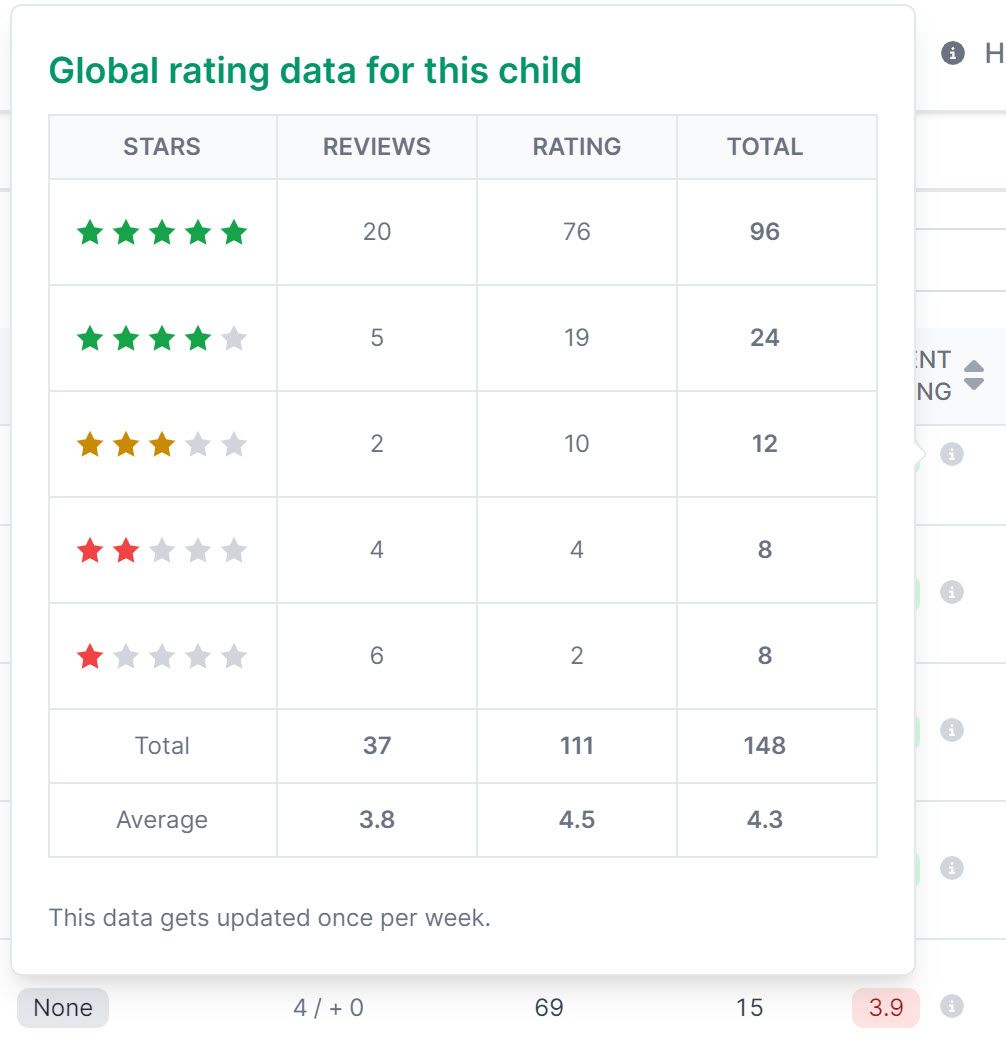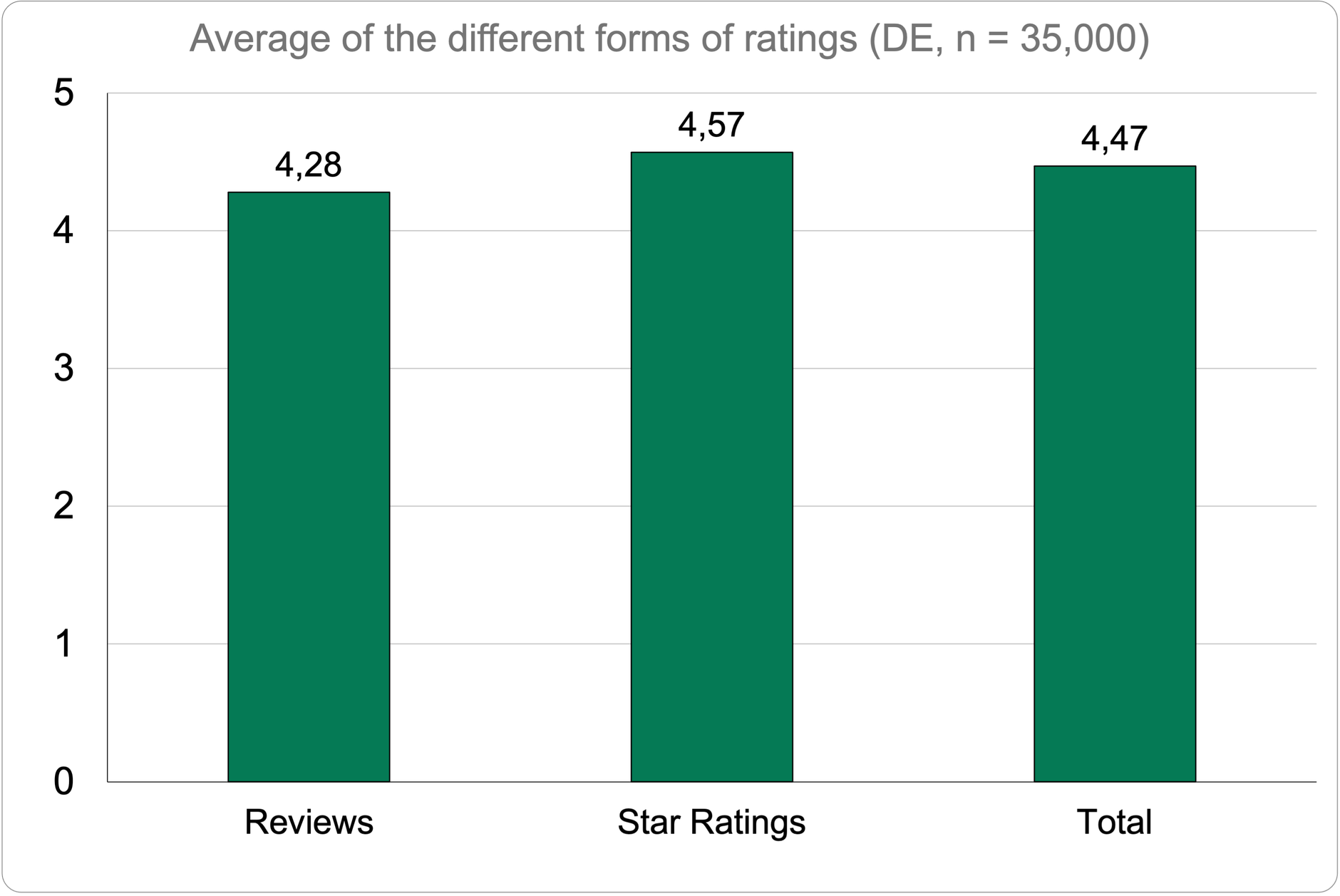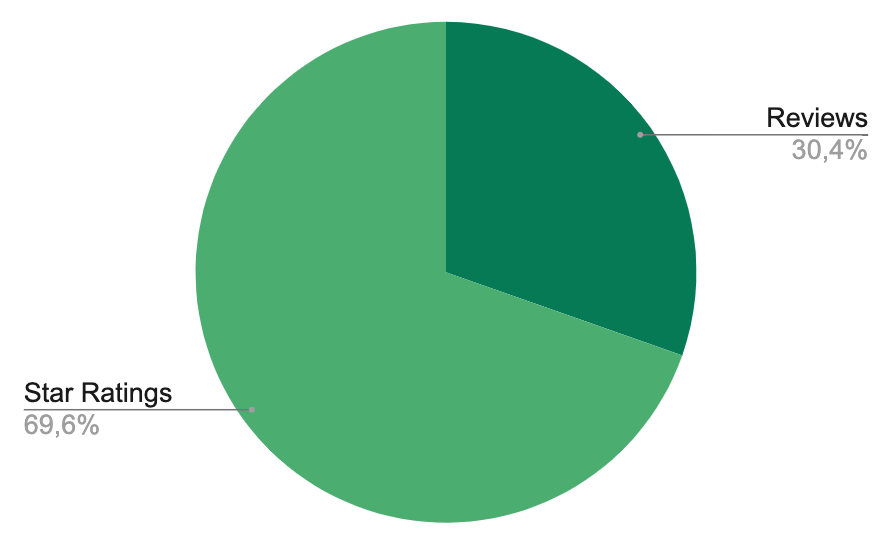On Amazon, buyers can rate products in two different ways. Either you give a rating between 1 and 5 stars without text, or you rate the product and write a text to it. In the following, we refer to the first case as star ratings and in the second case we speak of a reviews. If we refer to both together, then we speak of ratings.

Amazon calculates the overall rating of a product from all ratings (star ratings + reviews). Here is an example.

Amazon does not directly reveal how the ratings are composed, i.e. how many of them come from reviews or pure star ratings. But on the detail page of the ratings, this information is somewhat hidden.

You can narrow this down even further by selecting a specific variant and the number of stars.

In this way, you can see very precisely how star ratings and reviews are distributed for a particular child.
Namely, if you subtract the number of reviews from the total rating, then you get the number of pure star ratings.
If we take the numbers from Figure 4, then there must be 82 ratings - 10 reviews = 72 star ratings with a rating of 3.
At AMALYTIX, we collect this data (in addition to the rating for Amazon top reviews for each child and for each rating (1-5) and display that for each child product as follows:

In the example above, you can see that the average rating for the star ratings of 4.8 is better than the average rating for all reviews of 3.5.
We took a closer look and looked at about 35,000 products on the German marketplace that have at least 100 reviews.
And the assumption is confirmed here as well. The average of the pure star ratings turns out better than that of the reviews, which is also illustrated by the following figure.

Customers are significantly more likely to give a star rating than a review, as shown by the distribution of pure star ratings compared to reviews (see Figure 7). We have analyzed just under 30 million ratings here.

Of the approx. 30 million ratings in total, 70% were pure star ratings and 30% reviews. Since pure star ratings are still comparatively new compared to reviews, this ratio is likely to shift further in favor of star ratings in the future.
If we look at the ratio of reviews and pure star ratings per rating (1-5), the following picture emerges:
| Rating | Star Rat. | Rev. | Diff. |
|---|---|---|---|
| 1 | 38% | 62% | -23% |
| 2 | 49% | 51% | -2% |
| 3 | 67% | 33% | 33% |
| 4 | 70% | 30% | 39% |
| 5 | 72% | 28% | 44% |
| Total | 70% | 30% | 39% |
If the pure star ratings clearly outweigh the ratings between 3 and 5 stars, the ratio is reversed for critical ratings with 1 or 2 stars. Here, there are usually more reviews than pure star ratings.
In other words: Whoever is dissatisfied also writes something about it.
This is often obvious, because dissatisfied customers are more likely to leave a text (a complaint) than satisfied customers. This was certainly one of Amazon's reasons for asking for pure star ratings, which Amazon now also asks for via the Amazon Echo, for example.
Key Takeaways
Understanding the difference between star ratings and written reviews is crucial for accurate product performance analysis. Star ratings tend to be 0.5 stars higher on average than written reviews.
- 70% of all ratings are pure star ratings without text
- Star ratings average 4.2 while written reviews average 3.7
- Negative experiences (1-2 stars) are more likely to include written text
- Monitor both metrics separately for complete insights
Understanding these patterns can also help when analyzing Amazon top reviews for competitive insights.



